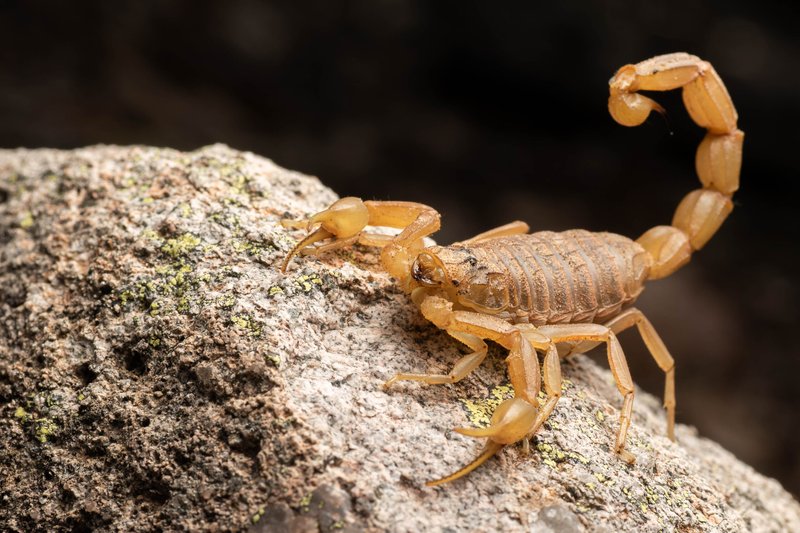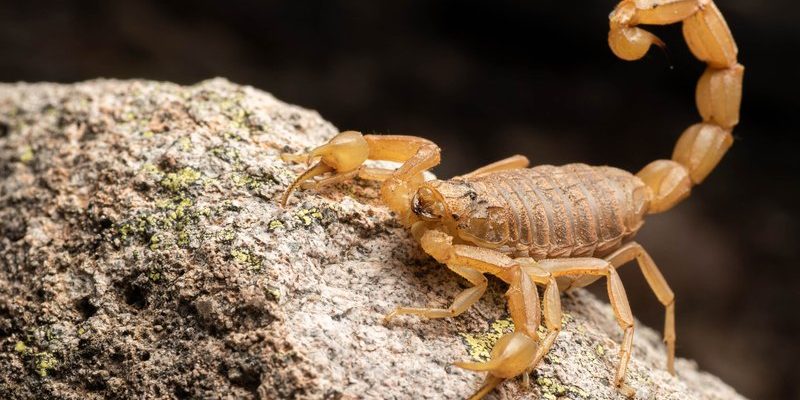
The Arizona bark scorpion, or *Centruroides sculpturatus*, is known for its distinctive look, sporting a slender body and long pincers. But just how dangerous is it? In this article, we’ll dive deep into the world of these scorpions, unpacking their venom, how it affects humans, and what to do if you encounter one. So, let’s get started!
What Is the Arizona Bark Scorpion?
The Arizona bark scorpion is often found in southwestern United States, particularly in Arizona. These creatures have a yellowish-brown hue and can grow up to three inches in length. They thrive in warm, dry environments and are commonly seen during the warmer months, which means they can pop up in backyards and campsites, leading to unexpected encounters.
These scorpions are nocturnal, so you might not see them during the day. Instead, they hide under rocks, logs, or even inside homes, making them the ultimate night owls of the insect world. Their diet mainly consists of insects like crickets and roaches, which they catch using their pincers. Imagine them as tiny hunters, stalking their prey with precision every night!
Are Arizona Bark Scorpions Poisonous?
When people hear the word “poisonous,” they often think of a lethal threat. However, in the case of the Arizona bark scorpion, it’s more accurate to say they are venomous rather than poisonous. Venomous creatures inject toxins into their prey or predators, while poisonous creatures are harmful when consumed or touched.
The venom of the Arizona bark scorpion contains a complex mix of toxins that can affect your body. The main component is a neurotoxin that can cause pain and discomfort. But don’t worry! Most healthy adults can tolerate a sting. It might feel like a bee sting—painful and swelling—but it typically won’t lead to serious issues. However, it’s important to recognize that young children, the elderly, and those with certain health conditions may experience more severe reactions.
What Happens When You Get Stung?
If you do find yourself on the receiving end of a scorpion sting, you might be wondering what to expect. Here’s the thing: the immediate effects can vary widely from person to person. Here’s a breakdown of common symptoms:
- Local pain: The most immediate sensation is a sharp pain at the sting site.
- Swelling and redness: You might notice some inflammation around the area, similar to an insect bite.
- Numbness or tingling: Some people report feeling numbness that can spread up an arm or leg.
- Other symptoms: In rare cases, people might feel more severe reactions like difficulty breathing or muscle spasms.
Most of these symptoms will fade within a few hours to a few days. But if you or someone you know experiences severe symptoms, it’s crucial to seek medical attention immediately. It’s always better to play it safe!
First Aid for a Scorpion Sting
If you or someone else gets stung, it’s important to know how to handle it. Here’s a simple step-by-step approach to provide first aid:
1. Stay Calm: Anxiety can increase pain and fear, so try to remain as calm as possible.
2. Clean the Area: Wash the sting site with soap and water to prevent infection.
3. Ice It: Apply a cold pack or ice wrapped in cloth to the area. This can help reduce swelling and numb the pain.
4. Pain Relief: Over-the-counter pain relievers like ibuprofen can help with discomfort.
5. Monitor Symptoms: Keep an eye out for any worsening symptoms, especially in vulnerable individuals.
If severe symptoms appear, don’t hesitate to call for help. Getting the right care quickly can make a significant difference.
How to Prevent Encounters with Arizona Bark Scorpions
Preventing encounters with these scorpions can save you a lot of trouble. Here are some effective strategies to keep them at bay:
- Clear your outdoor areas: Keep your yard tidy by removing debris, old wood, and rocks where scorpions might hide.
- Seal your home: Check for cracks and gaps in walls, windows, and doors. Sealing these areas can deter scorpions from coming inside.
- Use proper lighting: Scorpions are attracted to light, so use yellow or sodium vapor bulbs outside, as they are less attractive to insects.
- Wear protective clothing: When hiking or exploring, wear long pants and closed shoes to reduce your risk of being stung.
Implementing these tips can help you enjoy your time outdoors without worry!
Comparing Bark Scorpions to Other Scorpion Species
You might be curious how the Arizona bark scorpion stacks up against other scorpion species. While there are many types of scorpions, their venom potency and behavior can differ. For example:
– The Emperor Scorpion: Known for its impressive size, it’s often kept as a pet. Its venom is weaker and generally not harmful to humans.
– The Deathstalker Scorpion: Found in North Africa and the Middle East, it has highly potent venom and can be dangerous, especially to children and the elderly.
– The Hottentotta Scorpion: This scorpion also has venom that can produce serious reactions, frequently found in Africa and parts of Asia.
While it’s essential to respect all scorpions, the Arizona bark scorpion, while venomous, is relatively less dangerous than some of its cousins. Understanding these differences can help you appreciate the wildlife around you!
In conclusion, while the Arizona bark scorpion is indeed venomous, it’s not the terrifying creature many might think. Most healthy individuals will experience little more than discomfort from a sting—similar to a bee sting. The key takeaway is to respect their space and take precautions to avoid encounters.
So, when you’re out enjoying the Arizona desert, remember these tips and stay informed. Knowledge is your best defense against these little nighttime warriors. Embrace the beauty of nature, and you’ll be just fine!

